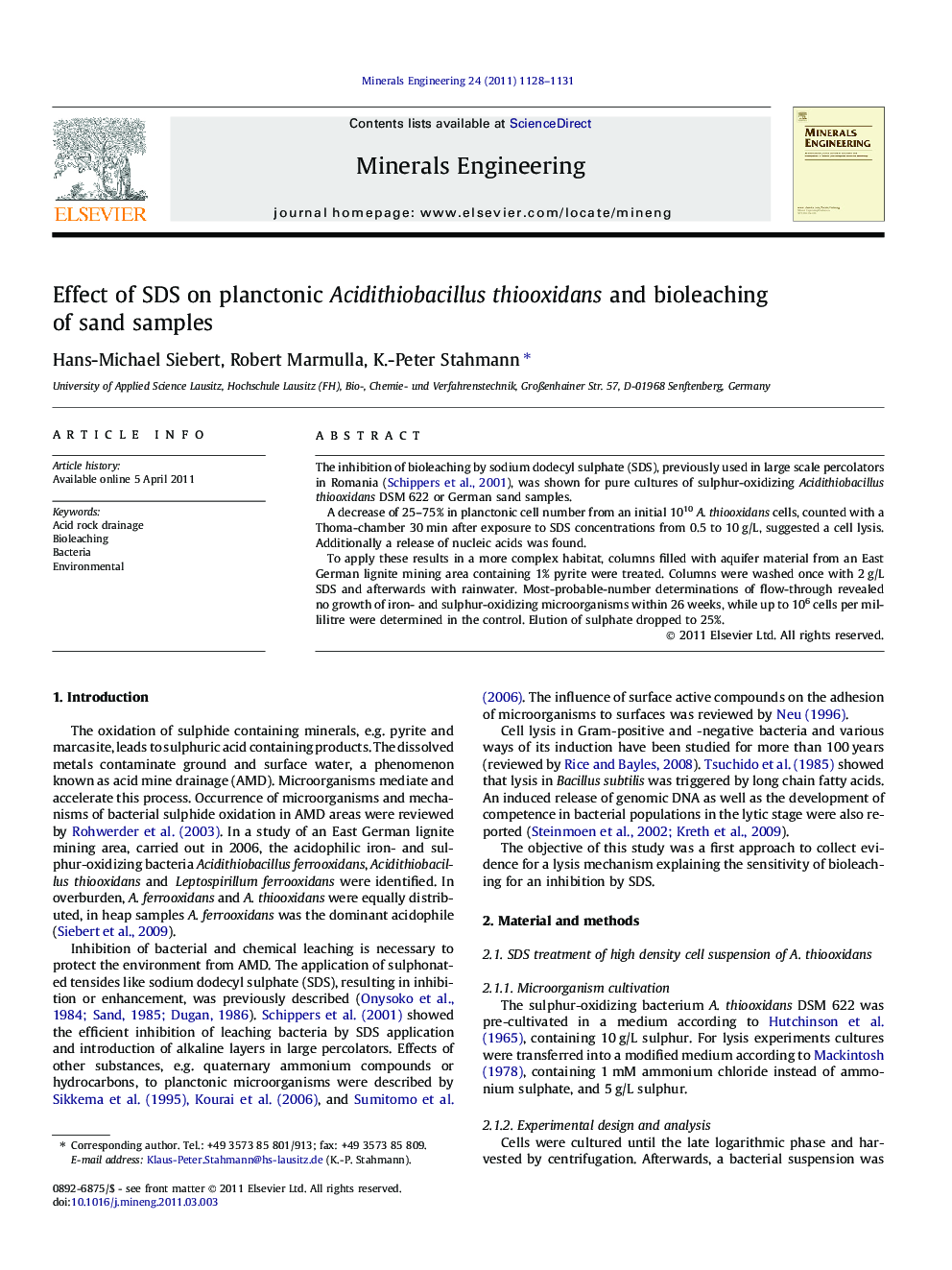| Article ID | Journal | Published Year | Pages | File Type |
|---|---|---|---|---|
| 233880 | Minerals Engineering | 2011 | 4 Pages |
The inhibition of bioleaching by sodium dodecyl sulphate (SDS), previously used in large scale percolators in Romania (Schippers et al., 2001), was shown for pure cultures of sulphur-oxidizing Acidithiobacillus thiooxidans DSM 622 or German sand samples.A decrease of 25–75% in planctonic cell number from an initial 1010A. thiooxidans cells, counted with a Thoma-chamber 30 min after exposure to SDS concentrations from 0.5 to 10 g/L, suggested a cell lysis. Additionally a release of nucleic acids was found.To apply these results in a more complex habitat, columns filled with aquifer material from an East German lignite mining area containing 1% pyrite were treated. Columns were washed once with 2 g/L SDS and afterwards with rainwater. Most-probable-number determinations of flow-through revealed no growth of iron- and sulphur-oxidizing microorganisms within 26 weeks, while up to 106 cells per millilitre were determined in the control. Elution of sulphate dropped to 25%.
► SDS effect on bioleaching was investigated. ► A lysis of A. thiooxidans in a planctonic high cell density system is suggested. ► Arguments: release of DNA and significant but not complete cell disappearance. ► In sand samples neither sulphur- nor iron-oxidizing microorganisms were detectable. ► Reduced sulphate release by SDS treatment indicated the sensitivity of bioleaching.
